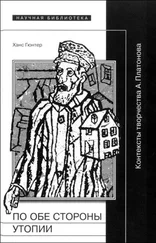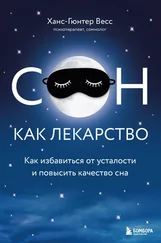• Marin JM, Carrizo SJ, Vicente E, Agusti AG (2005). Long-term cardiovascular outcomes in men with obstructive sleep apnoea-hypopnoea with or without treatment with continuous positive airway pressure: An observational study. Lancet ; 19–25; 365: 1046–53.
• Mariotti P, Quaranta D, Di Giacopo R, Bentivoglio AR, Mazza M, Martini A, Canestri J, Della Marca G (2015). Rapid eye movement sleep behavior disorder: A window on the emotional world of Parkinson disease. Sleep ; 38: 287–94.
• Marquie JC, Tucker P, Folkard S, Gentil C, Ansiau D (2014). Chronic effects of shift work on cognition: Findings from the VISAT longitudinal study. Occupational and Environmental Medicine ; doi: 10.1136/oemed-2013–101993.
• Marti S, Sampol G, Munoz X, Torres F, Roca A, Lloberes P, Sagales T, Quesada P, Morell F (2002). Mortality in severe sleep apnoea/hypopnoea syndrome patients: Impact of treatment. European Respiratory Journal ; 20: 1511–8.
• Maestripieri D (2014). Night owl women are similar to men in their relationship orientation, risk-taking propensities, and cortisol levels: Implications for the adaptive significance and evolution of eveningness. Evolutionary Psychology ; 12: 130–47.
• McCarter SJ, St. Louis EK, Duwell EJ, Timm PC, Sandness DJ, Boeve BF, Silber MH (2014). Diagnostic thresholds for quantitative REM sleep phasic burst duration, phasic and tonic muscle activity, and REM atonia index in REM sleep behavior disorder with and without comorbid obstructive sleep apnea. Sleep ; 37: 1649–62.
• Moser D, Anderer P, Gruber G, Parapatics S, Loretz E, Boeck M, Kloesch G, Heller E, Schmidt A, Danker-Hopfe H, Saletu B, Zeitlhofer J, Dorffner G (2009). Sleep classification according to AASM and Rechtschaffen & Kales: Effects on sleep scoring parameters. Sleep ; 32: 139–49.
• Nachreiner F, Wirtz A, Browatzki D, Dittmar O, Schomann C (2010). Lebensarbeitszeit, Schichtdienst und Gesundheit. In: H. Gros, H. Seifert (Hrsg), Zeitkonflikte: Renaissance der Arbeitszeitpolitik, Forschung aus der Hans-Bockler-Stiftung, Band Berlin: Edition Sigma; 115–35.
• Nadorff MR, Nazem S, Fiske A (2011). Insomnia symptoms, nightmares, and suicidal ideation in a college student sample. Sleep ; 34: 93–8.
• Ohayon, M (2002). Prevalence of narcolepsy symptomatology and diagnosis in the European general population. Neurology ; 58: 1826–33.
• Ohayon M (2005). How age influences the expression of narcolepsy. The Journal of Psychosomatic Research ; 59: 399–405.
• Ohayon M, Carskadon MA, Guilleminault C, Vitiello MV (2004). Meta-analysis of quantitative sleep parameters from childhood to old age in healthy individuals: Developing normative sleep values across the human lifespan. Sleep ; 27: 1255–73.
• Pellegrino R, Kavakli IH, Goel N, Cardinale CJ, Dinges DF, Kuna ST, Maislin G, Van Dongen HP, Tufik S, Hogenesch JB, Hakonarson H, Pack AI (2014). A novel BHLHE41 variant is associated with short sleep and resistance to sleep deprivation in humans. Sleep ; 37: 1327–36.
• Peppard PE, Young T, Palta M, Skatrud J (2000). Prospective study of the association between sleep-disordered breathing and hypertension. The New England Journal of Medicine ; 342: 1378–84.
• Pillai V, Roth T, Drake CL (2015). The nature of stable insomnia phenotypes. Sleep ; 38: 127–38.
• Rahman SA, Flynn-Evans EE, Aeschbach D, Brainard GC, Czeisler CA, Lockley SW (2014). Diurnal spectral sensitivity of the acute alerting effects of light. Sleep ; 37: 271–281.
• Rechtschaffen A, Bergmann B (2002). Sleep deprivation in the rat: An update of the 1989 paper. Sleep ; 25: 18–24.
• Robert G, Zadra A (2014). Thematic and content analysis of idiopathic nightmares and bad dreams. Sleep ; 37: 409–17.
• Rodenbeck A, Binder R, Geisler P, Danker-Hopfe H, Lund R, Raschke F, Wees HG, Schulz H (2006). A review of sleep EEG patterns. Part I: A compilation of amended rules for their visual recognition according to Rechtschaffen and Kales. Somnologie ; 10: 159–175.
• Roenneberg T (2013). The human sleep project. Nature ; 498: 427–8.
• Sandman N, Valli K, Kronholm E, Revonsuo A, Laatikainen T, Paunio T (2015). Nightmares: Risk factors among the Finnish general adult population. Sleep , 38: 507–14.
• Sauter C, Popp R, Danker-Hopfe H, Buttner A, Wilhelm B, Binder R, Bohnuing W, Wees, HG (2007). Normative values of the German Epworth Sleepiness Scale. Results from a multicenter study. Somnologie ; 11: 272–8.
• Schenck CH, Bundlie SR, Ettinger MG, Mahowald MW (1986). Chronic behavioral disorders of human REM sleep: A new category of parasomnia. Sleep ; 9: 293–308.
• Schlack R, Hapke U, Maske U, Busch S, Cohrs S (2013). Haufigkeit und Verteilung von Schlafproblemen und Insomnie in der deutschen Erwachsenenbevolkerung. Ergebnisse der Studie zur Gesundheit Erwachsener in Deutschland (DEGS1). Bundesgesundheitsbl 2013, 56: 740–8, Springer.
• Schredl M (2013). Nightmares as a paradigm for studying the effects of stressors. Sleep ; 36: 969–70.
• Spilsbury JC, Storfer-Isser A, Rosen CL, Redline S (2015). Remission and incidence of obstructive sleep apnea from middle childhood to late adolescence. Sleep ; 38: 23–9.
• Standards of Practice Committee of the American Academy of Sleep Medicine: M Timothy, Kramer M, Alessi C, Friedman L, Boehlecke B, Brown T, Coleman J, Kapur V, Lee-Chiong T, Owens J, Pancer J, Swick T (2006). Practice parameters for the psychological and behavioral treatment of insomnia: An update. An American Academy of sleep medicine report. Sleep ; 29: 11.
• Standards of Practice Committee of the American Academy of Sleep Medicine: Aurora RN, Zak RS, Maganti RK, Auerbach SH, Casey KR, Chowdhuri S, Karippot A, Ramar K, Kristo DA, Morgenthaler TI (2010). Best practice guide for the treatment of REM sleep behavior disorder (RBD). Journal of Clinical Sleep Medicine ; 6: 1.
• Steinberg R, Wees H-G, Landwehr R (2010). Schlafmedizin – Grundlagen und Praxis Auflage. Bremen: Uni-Med Verlag.
• Strine TW, Chapman DP (2004). Associations of frequent sleep insufficiency with health-related quality of life and health behaviors. Sleep Med ; 2005: 6–23 (National Health nutrition survey aus dem Jahr 2004).
• Stuck B, Maurer J, Schredl M, Wees H.-G (2013). Praxis der Schlafmedizin, 2. Auflage. Heidelberg: Springer.
• Taylor DJ, Mallory LJ, Lichstein KL, Durrence HH, Riedel BW, Bush AJ (2007). Comorbidity of chronic insomnia with medical problems. Sleep ; 30: 213–8.
• Timonen M (2012). Can transcranial brain-targeted bright light treatment via ear canals be effective in relieving symptoms in seasonal affective disorder? A pilot study. Medical Hypotheses 78: 511–5.
• Turanyi CS, Ronai KZ, Zoller R, Veber O, Czira ME (2014). Association between lunar phase and sleep characteristics. Sleep Med ; 15: 1411–6.
• Van Cauter E (2011). Sleep Disturbance and insulin resistance. Diabet Med ; 28: 1455–62.
• Van der Vinne V, Zerbini G, Siersema A, Pieper A, Merrow M, Hut RA, Kantermann T (2015). Timing of examination affects scholl performance differently in early and late chronotypes. Journal of Biological Rhythms ; 30: 53–60.
• Veasey S, Guilleminault C, Kingman, Strohl P, Sanders MH, Ballard RD, Magalang UJ (2012). Medical therapy for obstructive sleep apnea: A review by the Medical Therapy for Obstructive Sleep Apnea Task Force of the Standards of Practice Committee of the American Academy of Sleep Medicine; 29: 1036–46.
• Vereinigung Cockpit 2013, Pressemitteilungen, Ubermudung im Cockpit – Realitat heute, auch in portugiesischen Flugzeugen. http://www.vcockpit.de/presse/pressemitteilungen/detailansicht/news/uebermuedung-im-cockpit-realitaet-heuteauch-in-portugiesischen-flugzeugen.html (Zugriff am 27.10.2015).
Читать дальше
![Ханс-Гюнтер Веес Я не умею спать [Как самостоятельно выявить и устранить расстройства сна за 21 день] [litres] обложка книги](/books/393893/hans-cover.webp)



![Джесс Кидд - Магия на каждый день [litres]](/books/388514/dzhess-kidd-magiya-na-kazhdyj-den-litres-thumb.webp)
![Дженнифер Гюнтер - The vagina book. Главная книга для тех, у кого есть этот орган [litres]](/books/390743/dzhennifer-gyunter-the-vagina-book-glavnaya-kniga-dl-thumb.webp)
![Джек Кетчам - Расстройство сна [сборник]](/books/391171/dzhek-ketcham-rasstrojstvo-sna-sbornik-thumb.webp)
![Изабелль Брум - Год и один день [litres]](/books/393590/izabell-brum-god-i-odin-den-litres-thumb.webp)
![Эдуард Веркин - Ведьмин день [litres]](/books/399420/eduard-verkin-vedmin-den-litres-thumb.webp)
![Пальмира Керлис - След сна. Книга 1 [litres]](/books/413321/palmira-kerlis-sled-sna-kniga-1-litres-thumb.webp)
![Пальмира Керлис - След сна. Книга 2 [litres]](/books/413324/palmira-kerlis-sled-sna-kniga-2-litres-thumb.webp)
![Ева Кац - 30 правил настоящего мечтателя. Практическая мечталогия на каждый день [litres]](/books/416892/eva-kac-30-pravil-nastoyachego-mechtatelya-praktichesk-thumb.webp)
